Comet Sailplane
Project
Someone once said,
"It ain't over till its over".
The picture below that was presented in Report No. 117 shows a potential
problem with the fill tube. When filling the tank, a piece of fuel
tubing will have to be pushed onto the end of the fill tube to connect the
fuel syringe. Since the fill tube is relatively long and unsupported, it
would appear to be quite easy to inadvertently bent the tube out of shape in
the filling process such that it will interfere with the fit of the cowl to
the firewall. Therefore, it seemed prudent to go back right now and make a
bracket that will secure the fill tube to the firewall to prevent this from
happening.

A piece of .016" brass strip was used to make the
bracket for the fill tube. The strip was bent around a piece of 1/8" copper
tubing in a vise. A Dremel cut off wheel was used to cut the brass loop in
half. Then a hole was drilled in the bracket for a 2-56 screw as shown
below. The 2-56 threaded barrel shown below the bracket was obtained by
cutting of the ears of a Du-Bro 2-56 threaded clevis. The role of this
barrel will be discussed later in the report.
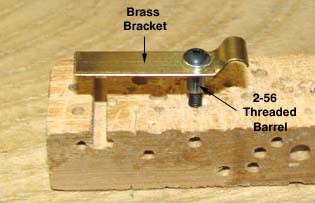
The tank was mounted to the fuselage and the
location of the bracket was marked on the fill tube, making sure the bracket
would clear the inside edge of the bulkhead on the back of the cowl.
The tank was removed from its mounting and placed
on the work table. It was weighted down and the bracket was placed over the
fill tube at the marked position and clamped to the work table as shown
below. Then the bracket was soldered to the fill tube.
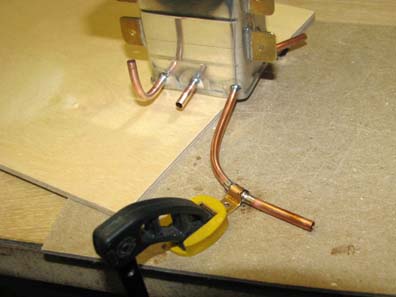
After soldering, the brass strip was cut off and
rounded on the end as shown below.
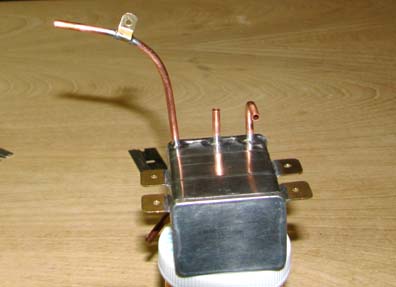
The construction of the fuselage was so far along
at this point that there is no access to install a blind nut behind the
firewall to attach the bracket with, so a different approach had to be use.
The tank was mounted to the fuselage and the
location of the hole in the bracket on the fill tube was marked on the
firewall. The tank was then removed from its mounting. A drill bit diameter
was selects to fit the 2-56 threaded barrel and a hole was carefully drilled
in the firewall where it was marked. However, the hole did not go completely
through the firewall, but was stopped at the last layer of ply. The inside
of the hole was coated with epoxy. A long 2-56 screw was threaded in the
barrel all of the way to the end. The barrel was coated with epoxy and then
forced into the hole and tapped with a hammer to set it good. Then the screw
was removed. Once the epoxy had set up overnight, the end of 2-56 threaded
barrel was filed down flush with the face of the firewall as shown below.
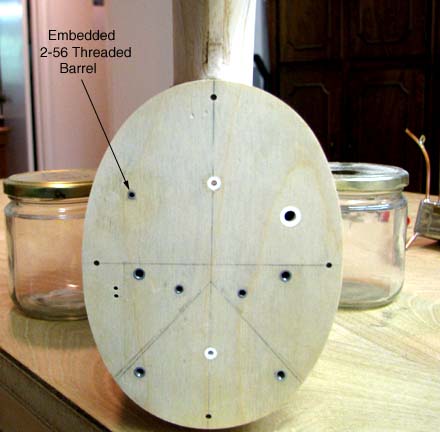
The fill tube bracket was secured to the firewall
with a short 2-56 cap screw and washer, which is shown below in the
picture's inset. The barrel that is epoxied in the firewall will always be
in shear when the fuel tubing is pushed onto the end of the fill tube to
connect the fuel syringe, so there will be no tension loads on the barrel
that could possible pull it out the firewall.
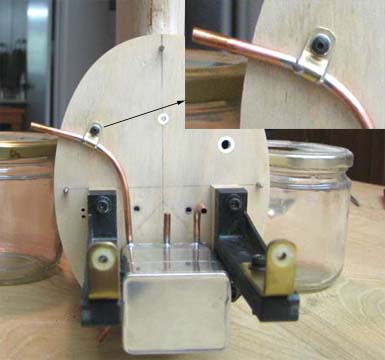
It took a fair amount of effort to explain the
addition of this rather simple bracket, but was necessary to illustrate what
I consider a good solution to this problem.........................Tandy